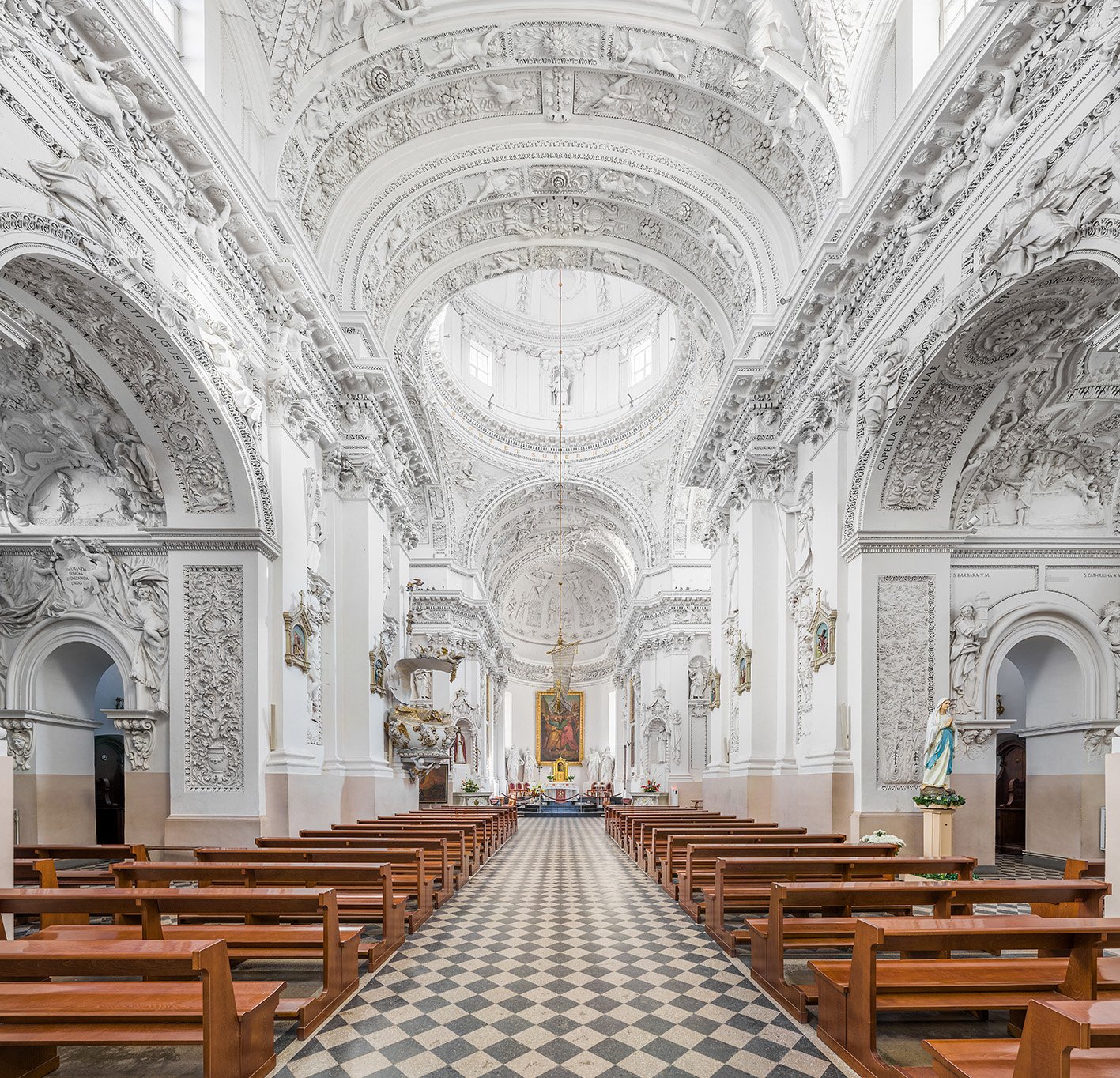If the phrase breathtaking could describe any church in the world, it should surely be the Church of St. Peter and St. Paul, Vilnius. Perhaps because the exterior betrays no hint of the stunning interior. The Baroque church, found on the edge of the district of Antakalnis a couple of kilometres east of the Old Town, is rarely crowded except when there’s a Mass. But even during Mass – typically held in the early mornings or early evenings in Lithuanian or in Polish – you’re free to wander in and look around.
The majesty of the church, once the centrepiece of a monastery, lies in its incredible stucco mini-sculptures covering the walls and aisles and the walk-through chapels and small cupola – mythological tales and grisly biblical scenes, curious creatures and skulls, angels and demons, and 2,000-odd human figures, all so detailed it’s impossible to absorb everything in a single visit.
The sculptures were created over a period of ten years, in 1677-87, by two Italian masters, Pietro Perti from Florence and Giovanni Maria Galli from Bologna. But why was no expense spared on such artistry? Because this was a glorified mausoleum. One of the most powerful men in the Grand Duchy of Lithuania, a veteran of many wars, Mikolaj Casimir Pac (1624-82), nobleman, grand hetman and voivode of Vilna, bought the lands of Antakalnis and wanted to leave the most awe-inspiring monument.

Touch of arrogance
If that sounds a touch arrogant, you may be right. Above the door as you enter is an inscription that could be interpreted as a vain play on words: ‘Regina Pacis funda nos in pace’ (Queen of Peace, protect us in peace). An appeal to the Mother of God, it’s also a pun on the great man’s name.
Pac also left instructions to be buried beneath the threshold – under a stone that held the humble phrase ‘Here lies a sinner’. Pac wanted to be remembered as a pious man, symbolised by worshippers stepping on his grave whenever they entered. But he must also have been aware that the parishioners of the time always bowed their heads when entering a church – and would bow also to him. When a bolt of lightning struck the stone one night in 1808, the monks took it as divine intervention and put a replacement plaque beside the entrance instead.
The huge drums inside the church to the left are said to have been seized from the Turks during battles that Pac himself took part in. On the right as you go in is a fearful sculpture of Death carrying his scythe, while on the left is St Christopher carrying the Christ child, the idea being that believers always walk around a church in a clockwise direction, starting left (the child symbolising the start of life) and ending at the right. At Death’s feet are symbols of wealth and status, meaning that death, of course, is the great leveller.
Dramatic chapels
Each of the miniature chapels has a different dedication, with incredibly intricate and dramatic sculptures. The first one on the left, for example is the Chapel of the Holy Queens, devoted to noblewomen who don’t forget their duties to the poor. The second one on the right is the Chapel of St Ursula, commemorating virgins massacred by barbarian soldiers out of hatred for their faith – and remembering the suffering of the women of Vilnius during a recent devastating six-year occupation of the city by Russian and Cossack forces.
On the left of the transept is the Altar of Our Lady of Mercy. This was the place where desperate and anxious citizens would pray for salvation during a plague towards the end of the 17th century, and below it is an expressive painting of the plague in Vilnius dating from 1710. Hanging from the cupola, meanwhile, is a crystal ship, magnificently catching the light. Made by Latvian craftsmen in 1905, perhaps it symbolises the fact that St Peter was a fisherman. Built, according to legend, on the site of a much-revered pagan temple, the Church of St. Peter and St. Paul is similarly magical. No visitor to Vilnius should miss it.





Comments